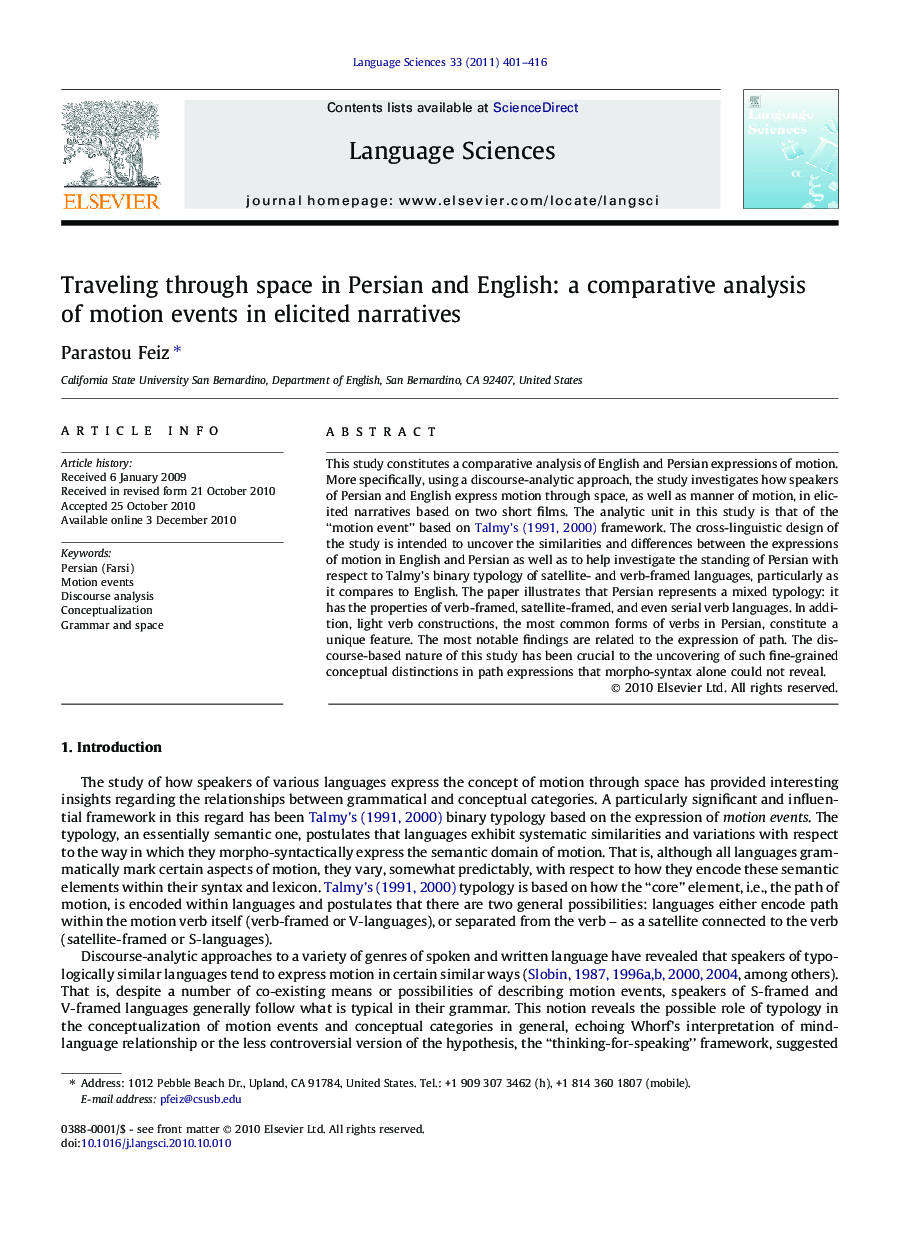| Article ID | Journal | Published Year | Pages | File Type |
|---|---|---|---|---|
| 1103353 | Language Sciences | 2011 | 16 Pages |
This study constitutes a comparative analysis of English and Persian expressions of motion. More specifically, using a discourse-analytic approach, the study investigates how speakers of Persian and English express motion through space, as well as manner of motion, in elicited narratives based on two short films. The analytic unit in this study is that of the “motion event” based on Talmy, 1991 and Talmy, 2000 framework. The cross-linguistic design of the study is intended to uncover the similarities and differences between the expressions of motion in English and Persian as well as to help investigate the standing of Persian with respect to Talmy’s binary typology of satellite- and verb-framed languages, particularly as it compares to English. The paper illustrates that Persian represents a mixed typology: it has the properties of verb-framed, satellite-framed, and even serial verb languages. In addition, light verb constructions, the most common forms of verbs in Persian, constitute a unique feature. The most notable findings are related to the expression of path. The discourse-based nature of this study has been crucial to the uncovering of such fine-grained conceptual distinctions in path expressions that morpho-syntax alone could not reveal.
